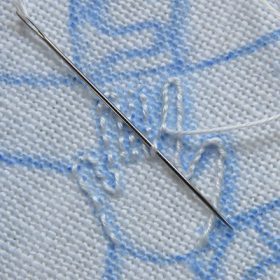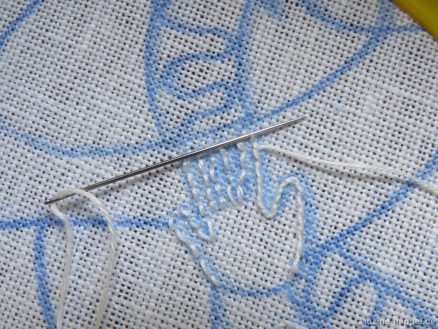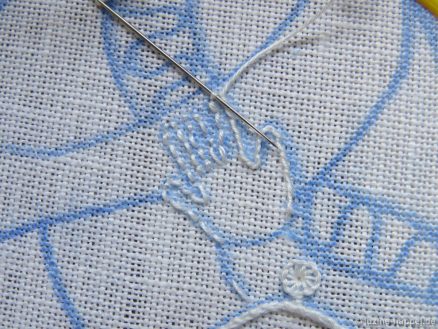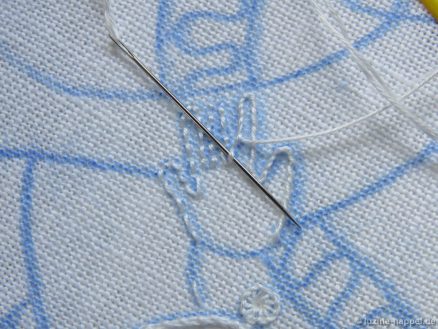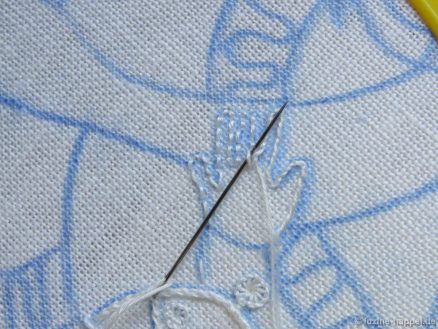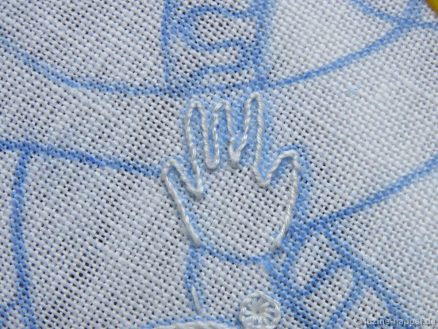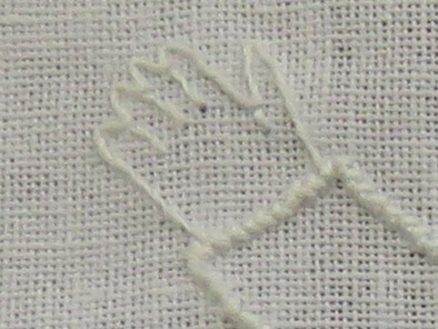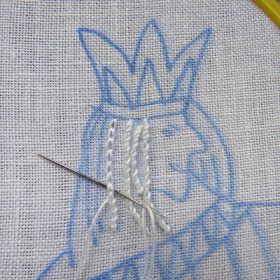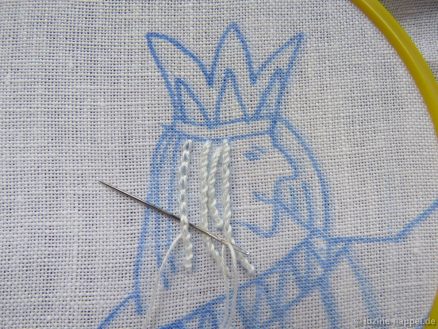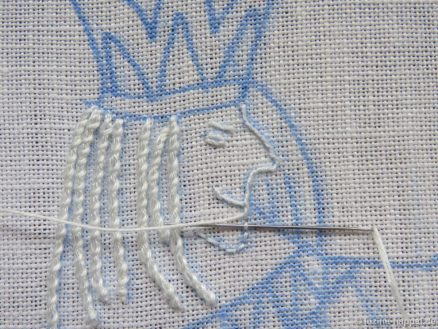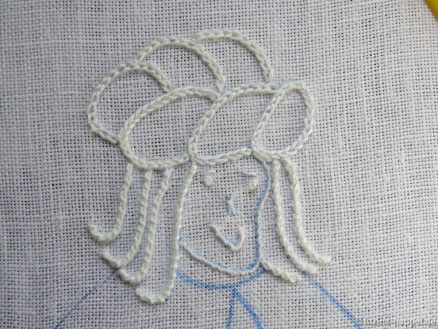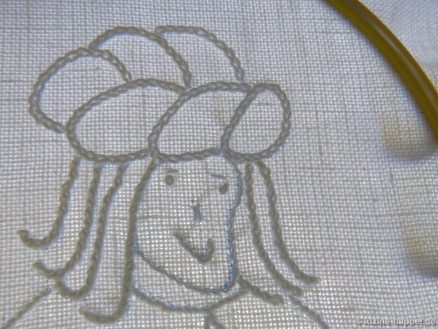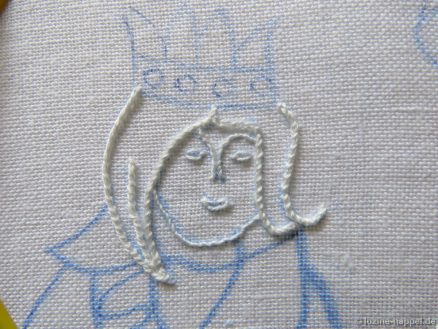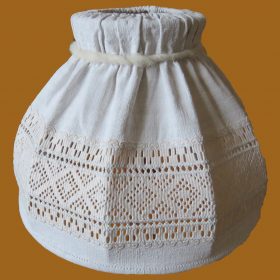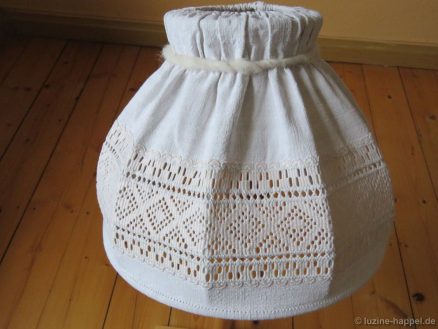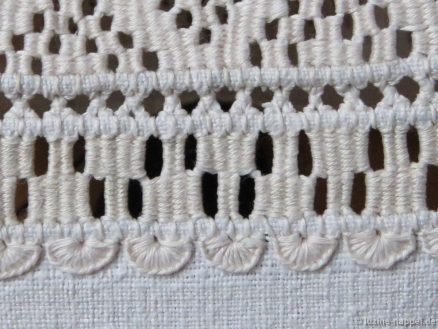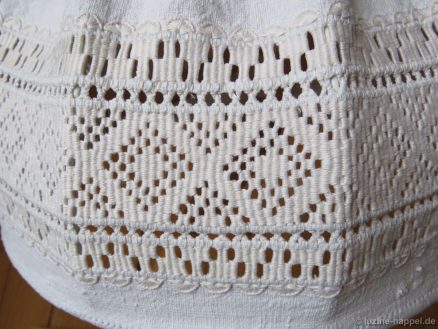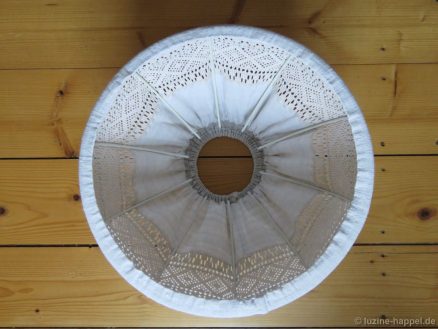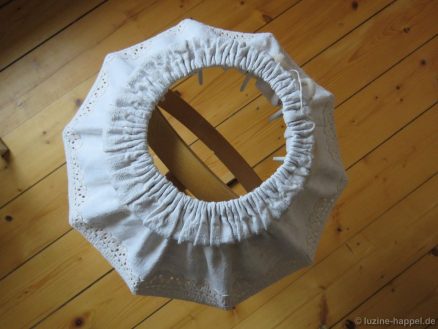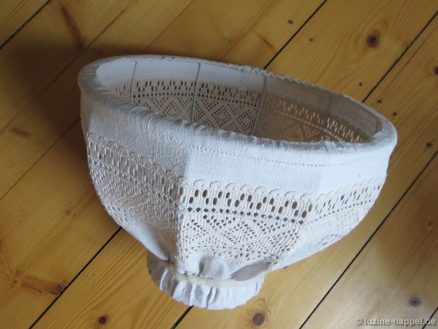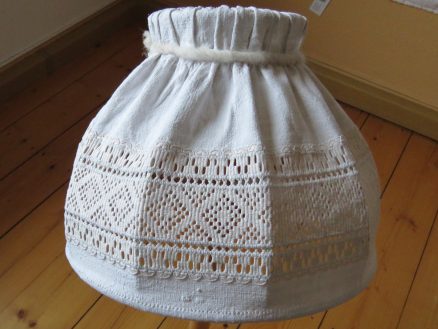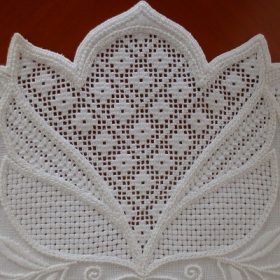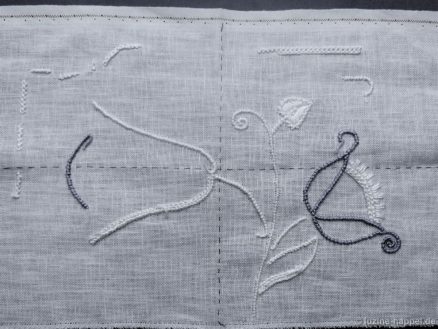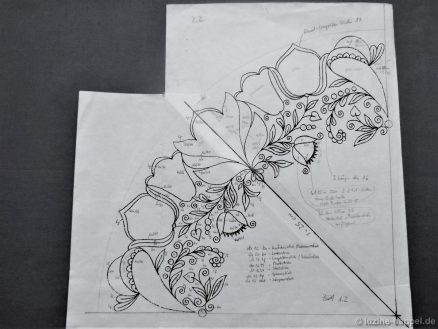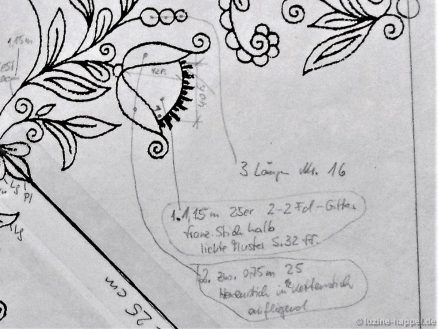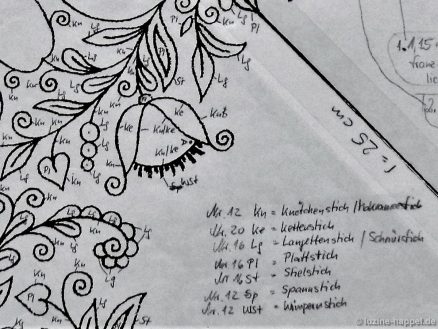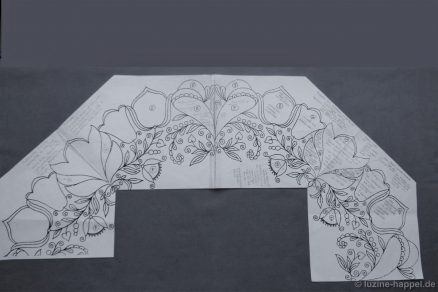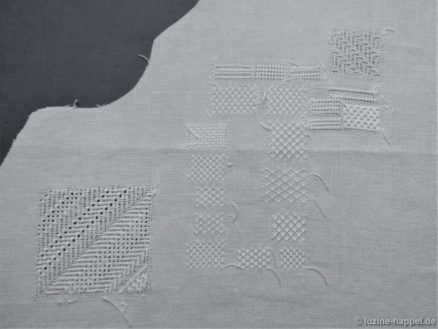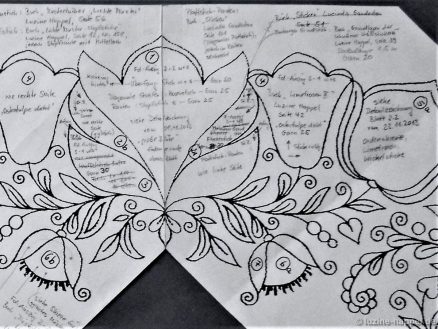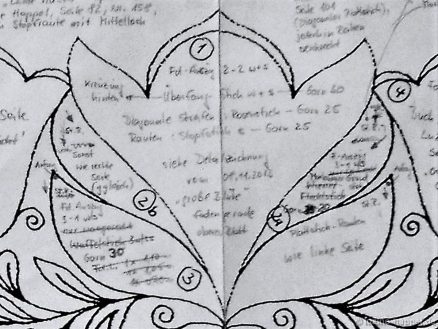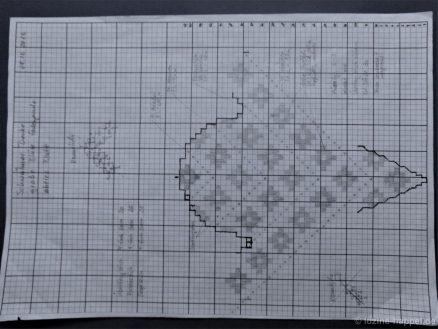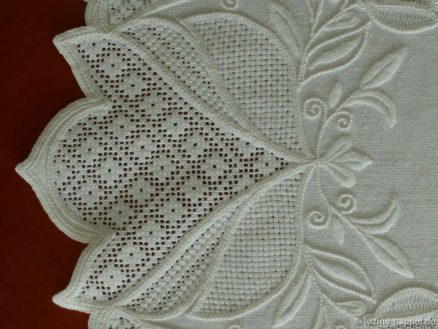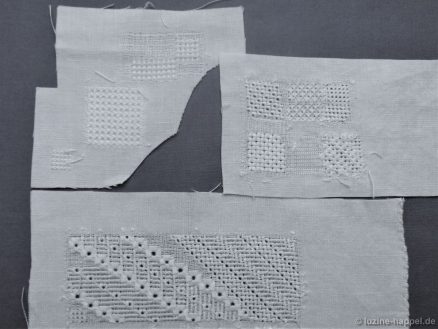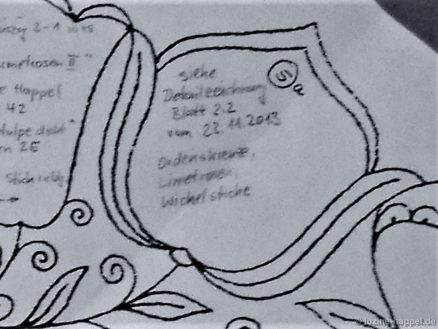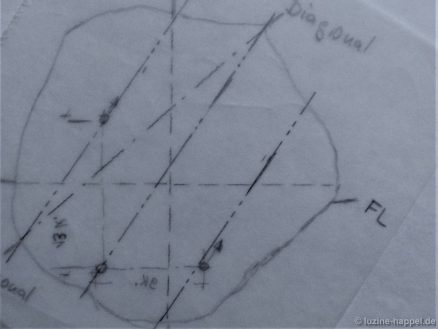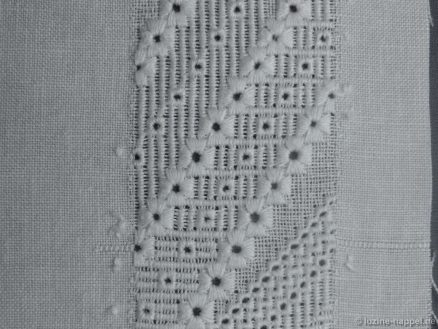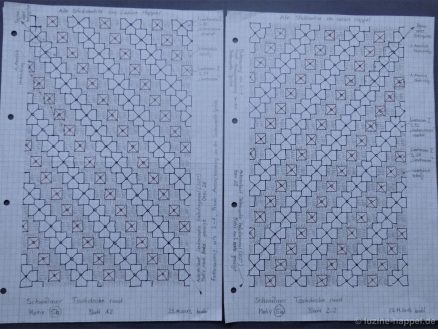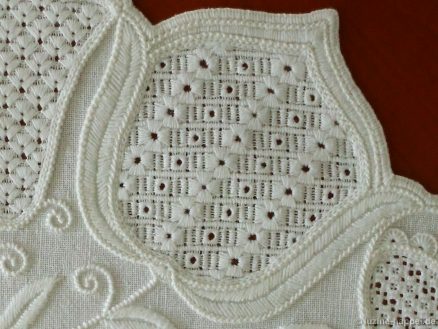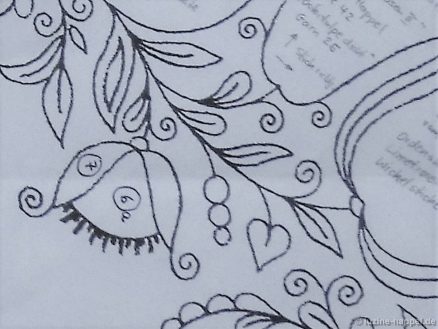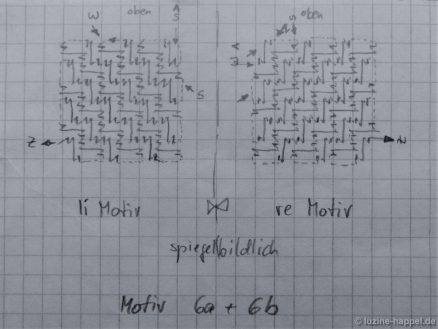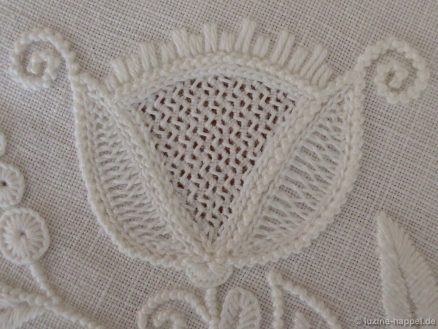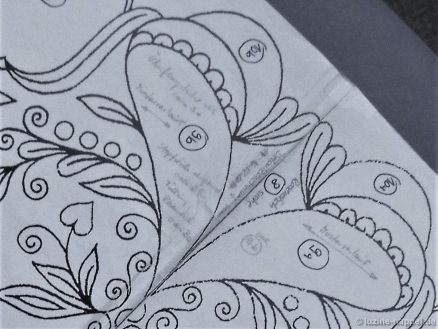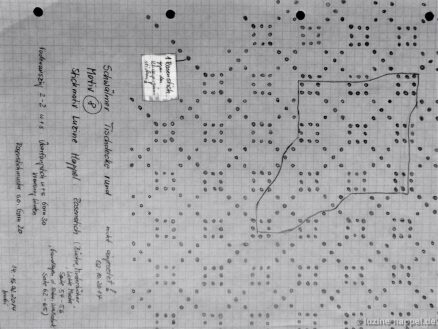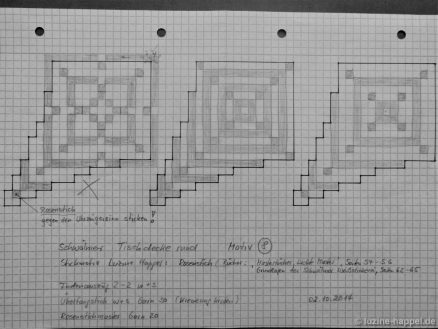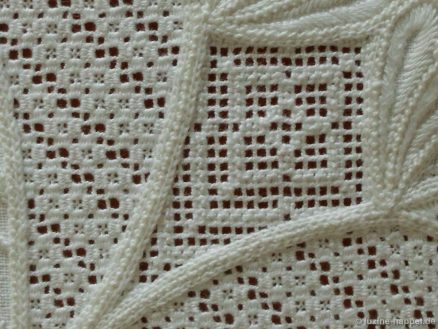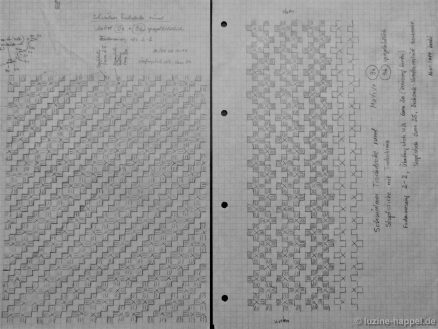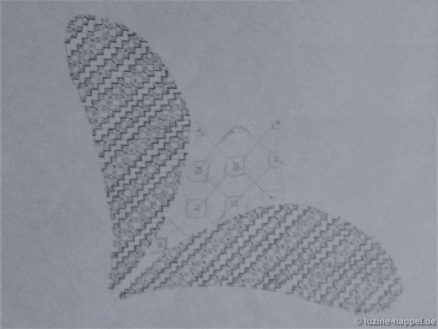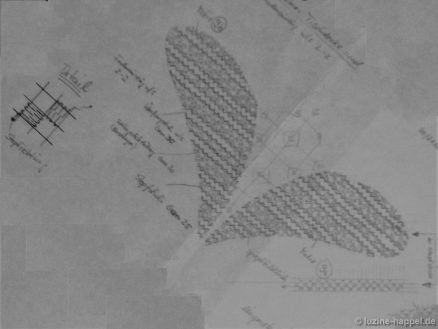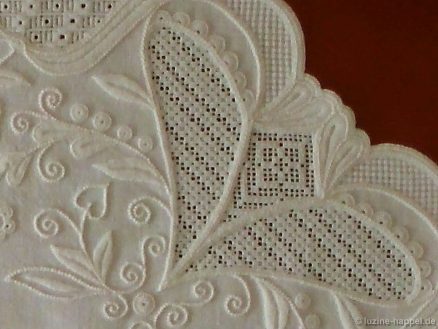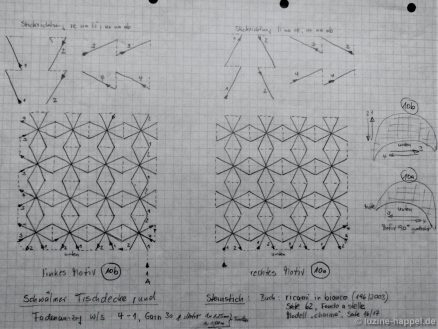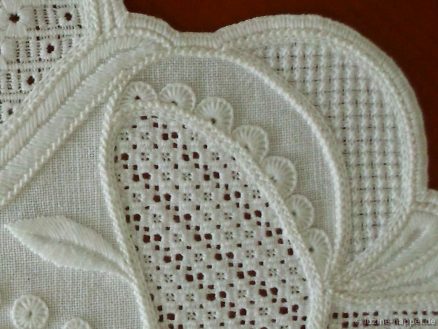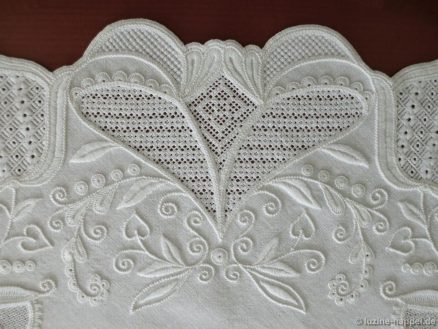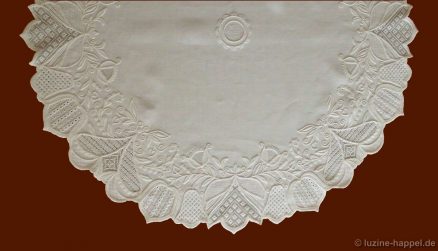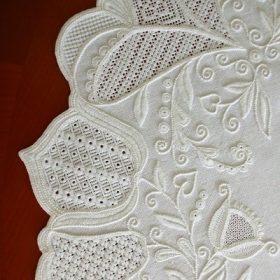brubi – an embroiderer who wants to remain anonymous – has described her dreamy Schwalm tablecloth in detail and has kindly allowed me to share these descriptions with you:
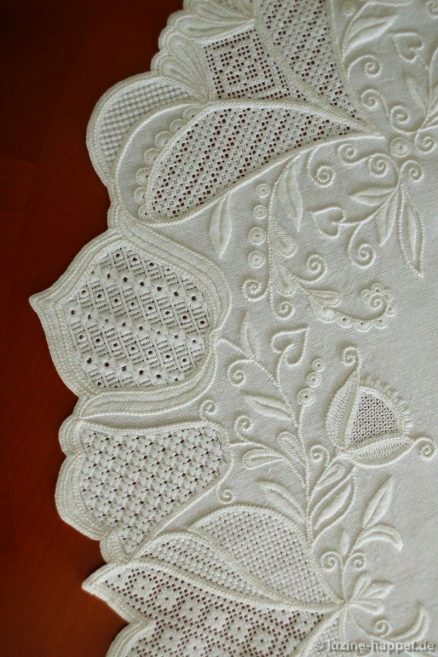
1/8 of the border embroidery
Border width approx. 20 cm
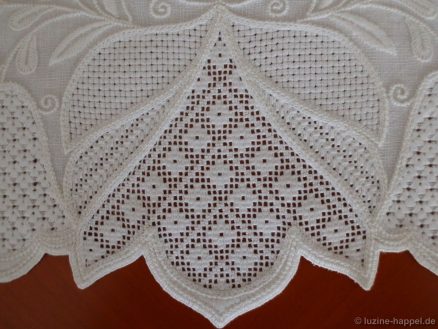
Details 1, 2 and 3: large flower (on the straight of grain)
flower center: thread withdrawing: cut 2, leave 2, Cable stitch grid, Rose stitch diagonally (book: Openwork Pattern Samplers, page 64), needle-weaving pattern „Raute“ Nr. 126 (book: Openwork Needleweaving Patterns, page 66).
inner petals: thread withdrawing: cut 2, leave 2, Cable stitch grid, two Satin stitches over one empty squares with change of direction around the corner, thread continuation on the back, embroidered in opposite directions,
outer petals: thread withdrawing: cut 1, leave 3, Satin stitch diamonds made of 5 stitches with change of direction (book: Sticken von Lucinda Ganderton, page 101).
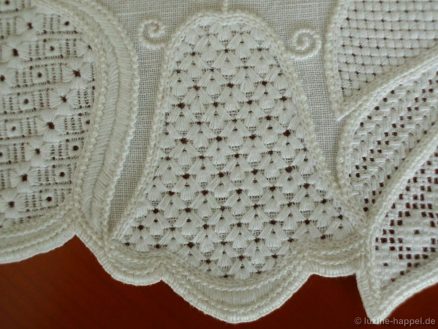
Detail 4: small tulip (on the straight of grain)
thread withdrawing: cut 1, leave 3,
double square eyelet pattern „Ostertulpe – dicht“ (book: Limetrosen II, page 42)
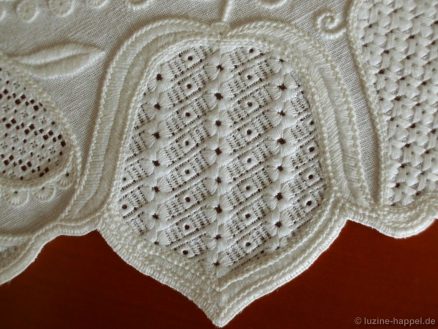
Detail 5: large tulip (inclined 22.5 degrees)
thread withdrawing: cut 1, leave 3,
Stitch combination, embroidered in mirror image in every second tulip, consisting of double square eyelet „Cross Medal – staggerd“, here single row (book: Limetrosen I, page 78), „Simple Square Eyelets“, here offset in one row (book: Limetrosen I, page 33), Satin stitch bars slanting, here with a change of direction (book: Wickelstiche I, page 9).
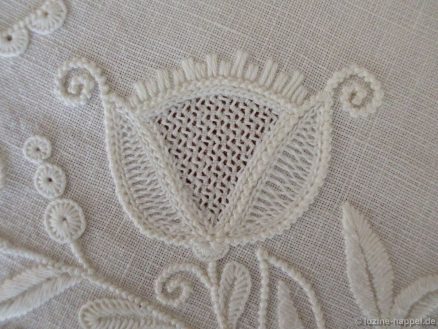
Details 6 and 7: bud (slightly inclined)
flower center: thread withdrawing: cut 2, leave 2,
Diagonal Cross Filling – French Variation/”half”, here embroidered in mirror image in every second bud, (book: Openwork Pattern Samplers, page 32),
outer petals:
surface Herringbone stitch, hooked into the chain stitch (inspired by book: Early Schwalm Whitework).
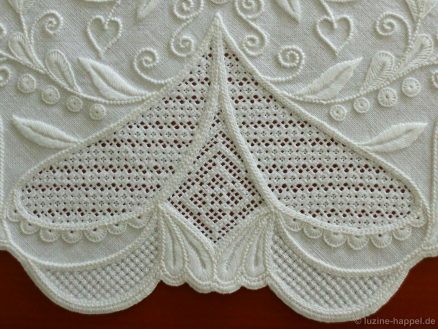
Details 8, 9 and 10: large flower (diagonal)
flower center: thread withdrawing: cut 2, leave 2,
Cable stitch grid, Rose stitch vertically (book: Openwork Pattern Samplers, page 63),
Outer petals: thread withdrawing: cut 2, leave 2,
Cable stitch grid, needle-weaving pattern over 1 square, here with a change of direction, 2- and 3 rows, (book: Openwork Needleweaving Patterns, page 83) with Rose stitch filling.
upper petals: thread withdrawing: cut 1, leave 4
Star stitch in rows (book: Ricami in bianco, Casa Editrice Mani di Fata, page 62, pattern „Fondo astelle“).
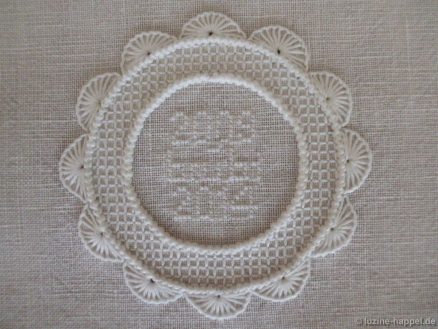
Detail 11: Crown (on the straight of grain – own design)
Circles: Macrame stitch,
Ring filling: Four-Sided stitch,
Semicircles: Blanket stitch half eyelets,
Characters: Cross stitch, text horizontally “brubi”, vertically “2009 – 2014”.
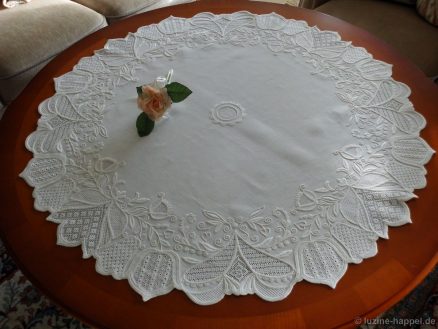
General information about embroidery realising
fabric: pure linen, 16 tpcm, Weddigen linen mill,
embroidery threads:
coton à broder:
No. 12: Makramee stitch, Coral Knot stitch, Satin stitch, Blanket stitch (border),
No. 16: Blanket stitch, Satin stitch, Stem stitch,
No. 20: Chain stitch, Blanket stitch (Detail 1),
No. 25: Rose stitch (Details 1,8, and 9), needle-weaving stitch (Detail 1 and Detail 9),
Karomuster (Detail 11), Limetrosen und Satin stitch (Detail 4 and Detail 5),
Diagonal Cross stitch – French Variation (Detail 6) and Herringbone stitch (Detail 7),
No. 30: Cable stitch grid, Rose stitch filling (Details 8, 9), Star stitch (Detail 10), Satin stitch diamonds (Detail 3),
Stranded Cotton:
1-ply: characters,
2-plies: underlay of the border.
Preparation for embroidering this tablecloth began on September 20, 2009.
Embroidery work began on October 27, 2009.
Completion of the embroidery work on November 16, 2014, 10:55 p.m.
Order of embroidery work:
1. Flower outlines in Macrame stitch (stitch embroidered from top to bottom)
2. Stems, tendrils, hearts, leaf outlines partly in Coral Knot stitch (stitch embroidered from top to bottom),
3. Leaves, leaf fillings, flower border fillings in Satin stitch,
4. Bud awns in Satin stitch
5. Some leaves, eyelets and half eyelets in Blanket stitch,
6. Inner flower outlines for the filling patterns in Chain stitch
7. Underlay border (stitch type forgotten), border in Blanket stitch.
– at least 1 year break –
8. Select, determine, sketch, test embroider outside the wreath area, withdrawingt the threads, embroider, and partially remove them again and changing the filling patterns.
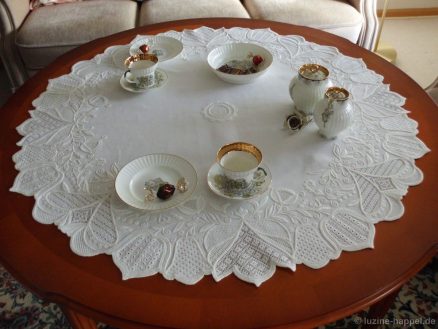
You will find out exactly how the preparatory work was done to achieve such sophisticated and first-class embroidery in the next blog post.
Stay tuned!
